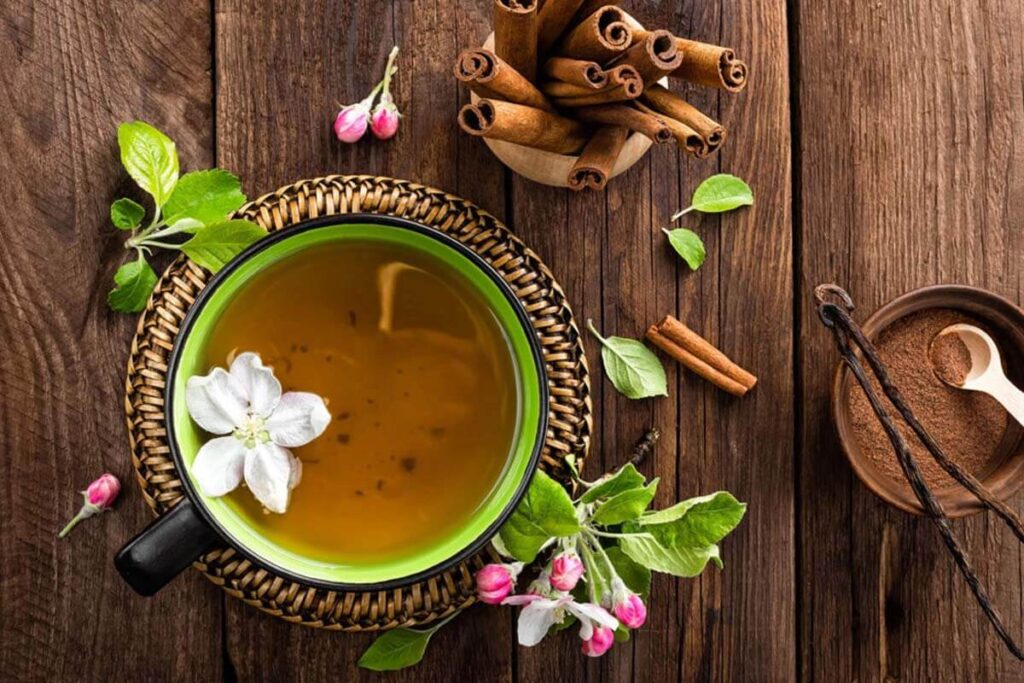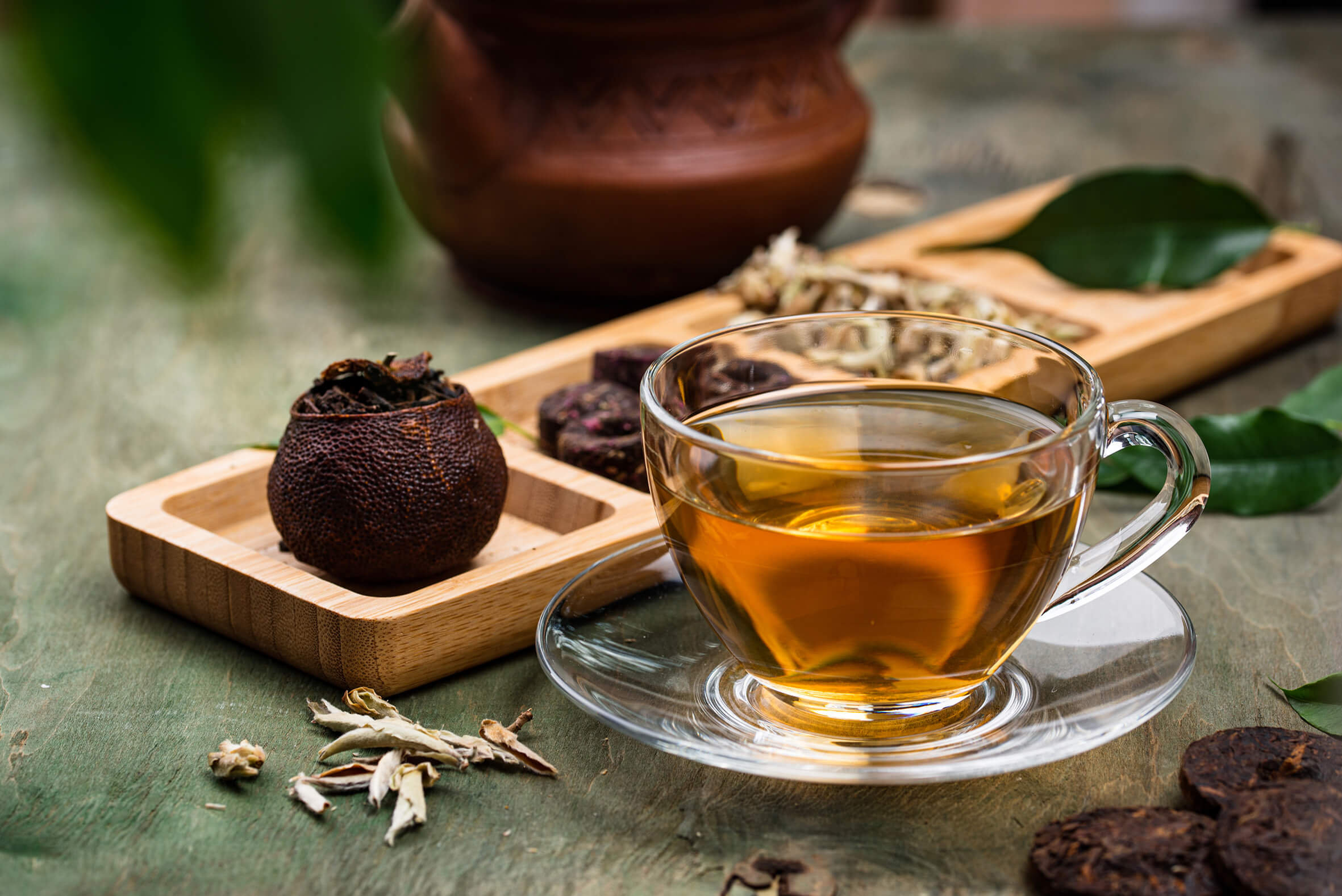
In the lush, misty mountains of Laifeng County in Hubei Province, a time-honored tradition thrives—the harvesting and drinking of vine tea. Known scientifically as Ampelopsis grossedentata, and locally as “Laifeng Teng Tea” or “Tujia Vine Tea,” this plant has been treasured for centuries by the Tujia ethnic group for its remarkable health properties and cultural symbolism.
Today, Laifeng Vine Tea is gaining global recognition as a natural health supplement, rich in dihydromyricetin, flavonoids, and essential minerals. But beyond its biochemical benefits lies a rich history and cultural heritage that make this tea far more than just a health drink—it is a symbol of longevity, resilience, and deep connection to nature.
Ancient Origins in the Wuling Mountains
Laifeng Vine Tea’s story begins in the remote and biodiverse Wuling Mountain range, an area long inhabited by the Tujia ethnic minority. The Tujia people, known for their close relationship with the land, discovered that the climbing vine with serrated leaves—Ampelopsis grossedentata—had a powerful cooling and detoxifying effect on the body.
Historically, this tea was brewed and consumed:
-
To relieve heat and inflammation during summer
-
As a natural remedy for alcohol overconsumption
-
To treat coughs, sore throats, and high blood pressure
-
And importantly, as a daily drink for maintaining vitality and longevity
Tujia elders claim that regular drinking of vine tea contributes to the remarkable health and long life found in their communities—many of which are home to people living well into their 90s and 100s.
A Tea with Folk Legends
Like many ancient plants used in traditional Chinese medicine, vine tea has been passed down through oral traditions and local legends. In Tujia folklore, it’s said that the tea was gifted by the mountain gods to help villagers fight off disease. One story tells of a healer who discovered the vine while foraging and used it to save his village from a mysterious fever. Since then, it has been called the “Tea of Life” or “Longevity Vine”.
These legends, while romantic, reflect a deeper truth: vine tea was regarded as sacred, a form of medicine disguised as a beverage, and deeply respected across generations.
The Cultural Practice of Tea Sharing
In Tujia culture, sharing vine tea is a gesture of friendship, respect, and welcome. Guests to a Tujia home are always offered a cup of vine tea first, before any food or conversation begins. This ritual emphasizes the importance of health and harmony.
During festivals and family gatherings, large pots of vine tea are brewed and passed around, and elders will often share stories about the tea’s role in their lives. It is not uncommon for young couples to drink vine tea during marriage ceremonies, symbolizing a healthy, prosperous union.
The cultural practice of vine tea extends beyond health—it is a social glue, a way to connect generations and maintain a shared identity within the community.
Preservation of Traditional Harvesting Methods
Laifeng Vine Tea is still harvested today using traditional, eco-friendly methods. Local farmers hand-pick the leaves and stems during the optimal growing seasons—typically in spring and early summer. The harvested material is carefully dried, sorted, and sometimes lightly fermented to enhance flavor and medicinal potency.
A unique feature of Laifeng Vine Tea is its “white frost”—a natural crystallization of flavonoids on the dried tea. This is considered the mark of the highest quality tea, and great care is taken during drying to preserve it.
The entire process, from field to teacup, is infused with generational knowledge and a deep respect for the plant and its ecosystem.
Modern Recognition and Global Appeal
In recent decades, as scientific research validated many of the health claims associated with vine tea, Laifeng Vine Tea has transitioned from local tradition to international health product. It has been featured in health journals and studies for its high concentration of dihydromyricetin (DHM)—a flavonoid that aids in:
-
Liver detoxification
-
Antioxidant protection
-
Blood pressure regulation
-
Sleep and anxiety reduction
This newfound attention has led to increased demand, not only in China but across Asia, Europe, and North America, where consumers seek natural solutions to modern health challenges.
Despite its global reach, Laifeng Vine Tea remains rooted in its origin, both literally and spiritually. Many farmers and cooperatives continue to prioritize traditional, pesticide-free cultivation and sustainable harvesting, ensuring the tea’s authenticity and preserving its legacy.
Vine Tea as a Symbol of Longevity
Among the Tujia people, there is a well-known saying:
“Drink vine tea, live to see three centuries.”
This reflects more than just optimism—it reflects generations of empirical experience. Elders who consumed vine tea daily often lived robust lives with minimal reliance on modern medicine. It is not unusual to find centenarians in Laifeng villages who attribute their health to daily cups of vine tea.
This association with longevity has become a major part of the tea’s branding, both locally and internationally. It’s not just sold as a beverage—it’s marketed as a symbol of long life, wellness, and ancient wisdom.
Conclusion: A Tea of the Past, Present, and Future
Laifeng Vine Tea is much more than a healthy herbal drink. It is the culmination of centuries of tradition, cultural reverence, and natural wisdom passed down through generations of mountain people. In every cup, you taste not only the bitter-sweet notes of the vine but also the history of a people and the healing power of the earth.
As we navigate a world increasingly filled with synthetic products and quick fixes, vine tea stands out as a beacon of natural, time-tested healing. Whether you’re drinking it to support your liver, improve sleep, or simply enjoy a connection to something ancient and meaningful, Laifeng Vine Tea offers something rare: authentic wellness rooted in culture.
So the next time you sip from your cup, remember—you’re not just drinking tea.
You’re taking part in a living tradition.


